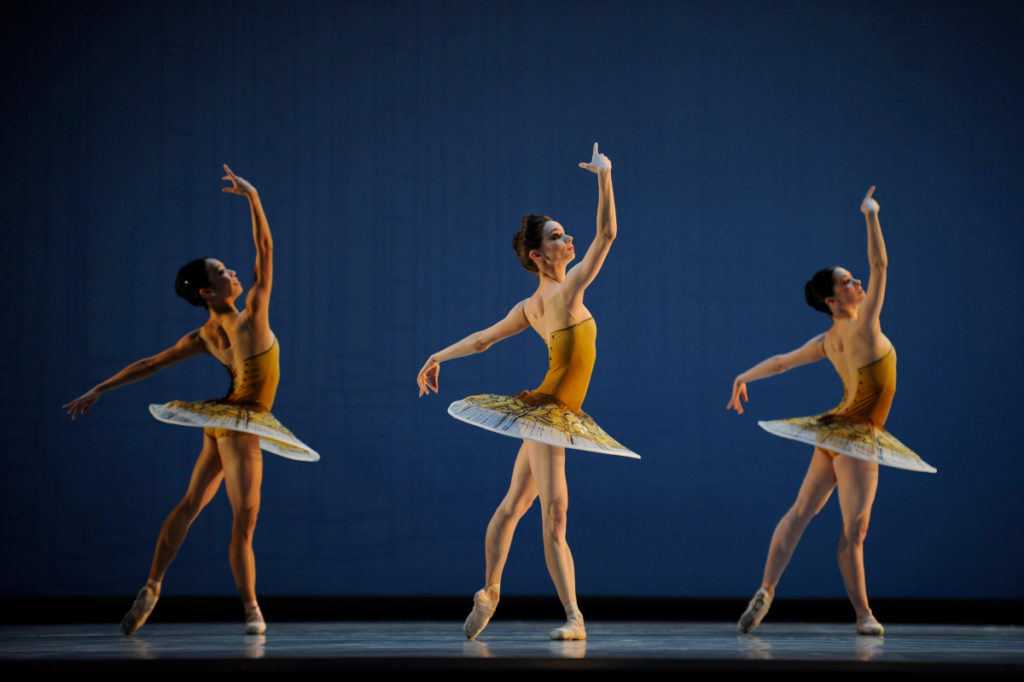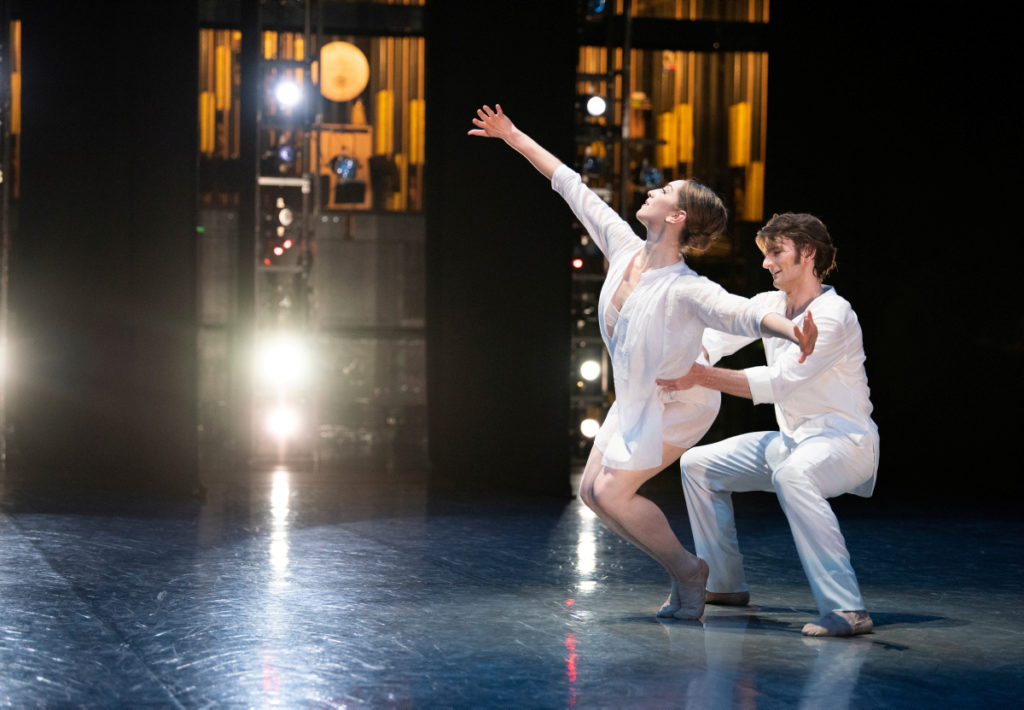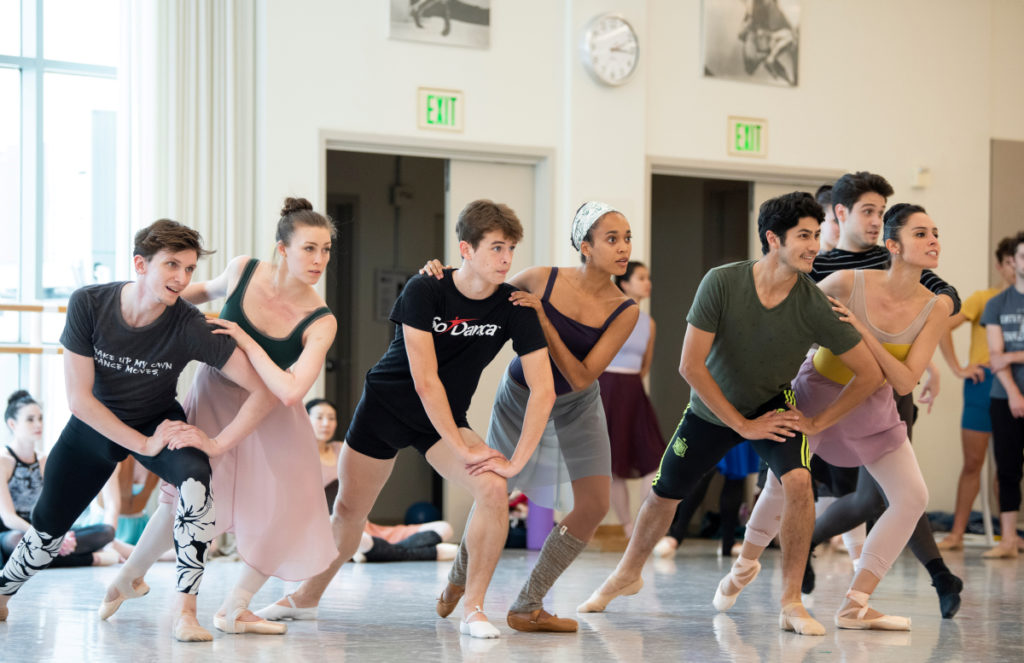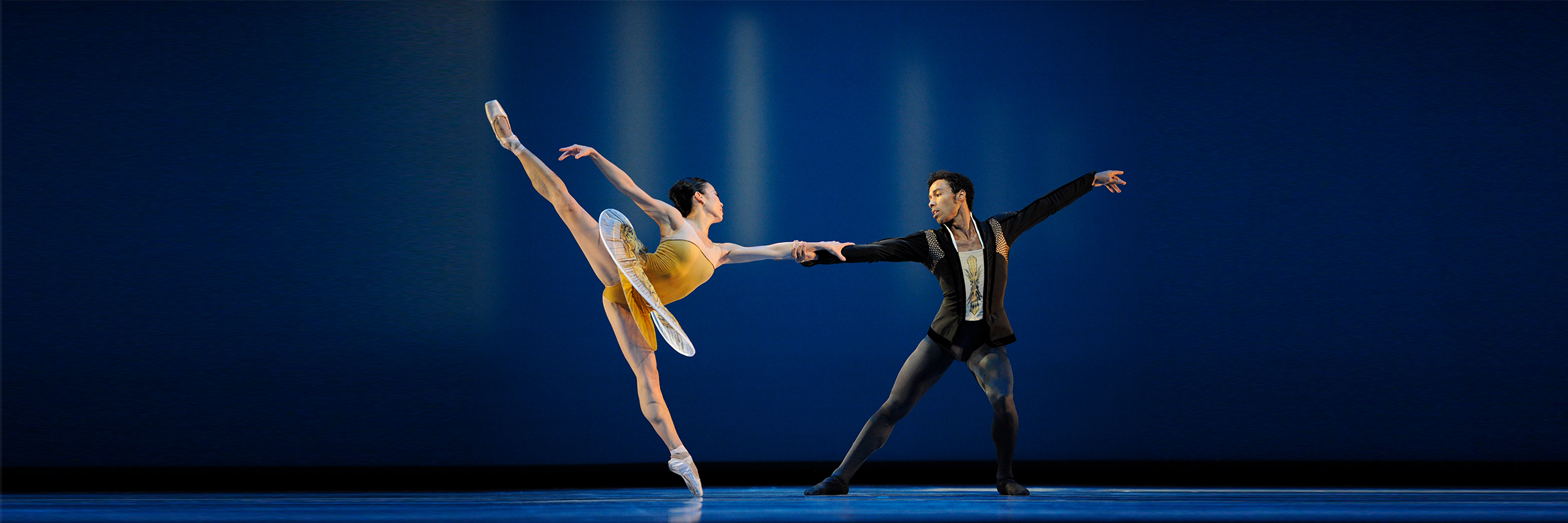Your Ultimate Guide to Present Perspectives
Three Innovative Choreographers, One Incredible Experience.
What Is It? A chance to see three of today’s most innovative choreographers—Yuri Possokhov, Benjamin Millepied, and Alexei Ratmansky—reimagine classical forms for a new century.
Who’s It For? Anyone who loves a Saturday spent at the De Young museum, a Netflix-binge of indie romance films, or changing out their home décor on a precise seasonal schedule.
CLASSICAL SYMPHONY

What Am I Seeing? Classical Symphony, created by San Francisco Ballet choreographer-in-residence Yuri Possokhov in 2010. The piece is dedicated to Peter Pestov, Possokhov’s teacher at the Bolshoi Ballet School. It’s not academic, as such, but it’s technically challenging and it requires a steely classical technique.
What Am I Hearing? Sergei Prokofiev’s Classical Symphony. Listen close: you’ll hear a section of the third movement here repeated in Prokefiev’s score for Romeo & Juliet later in the season!
What Should I Look For? For all that this is Possokhov’s homage to classical technique, it’s not purely classical. Notice the costumes: the tutus resemble those found in 19th-century ballets, but they’re lighter, made of only two thin layers of fabric rather than dozens of layers of tulle. The choreography is similar, taking classical steps but twisting them to show new angles.
APPASSIONATA

What Am I Seeing? An intimate exploration of love and passion created by LA Dance Project director Benjamin Millepied. First created for the Paris Opera Ballet, where Millepied was director from 2014–16, this ballet features three couples who fall in and out and in to love over the course of its 30 minutes.
What Am I Hearing? Ludwig von Beethoven’s Piano Sonata No. 23 in F minor, commonly known as the Appassionata. Fiendishly difficult to play, this sonata is explosive, volatile, and impassioned.
What Should I Look For? The heart of this ballet is in the central pas de deux set to the andante. This romantic interlude interrupts the frenetic pace set in the opening allegro and transforms the emotional energy of the ballet.
THE SEASONS

What Am I Seeing? The West Coast premiere of Alexei Ratmansky’s ballet The Seasons. Created at American Ballet Theatre in the spring of 2019, this ballet reimagines a lost work by 19th-century choreographer Marius Petipa. Ratmansky is very interested in what’s called “ballet reconstruction,” a process of using notation and photographs to recreate Petipa’s works as precisely as possible. But for The Seasons, he takes a different approach, using the libretto of the ballet but completely reinventing its choreography.
What Am I Hearing? Alexander Glazunov’s The Seasons. Perhaps best known as Shostakovich’s teacher, Glazunov is sometimes overlooked as an artist, but two of his ballets, Raymonda and The Seasons, are among the most popular of his works.
What Should I Look For? Although he created all new choreography, Ratmansky preserved Petipa’s original libretto, so look for a whole cast of various beings on stage: Frost, Ice, and Hail; a Zephyr and a Rose; a Faun, the Spirit of the Corn, and Bacchus himself. The original cast was a who’s-who of famous ballet Imperial Ballet stars like Olga Probrazhenskaya, Matilde Kschessinskaya, Pavel Gerdt, Nikolai Legat, and Anna Pavlova. There’s a way that aspect of the ballet filters through to this version. It has many principal characters and principal parts, all full of technical challenges and requiring star turns of their dancers.
By Jennie Scholick, PhD
Header image: Frances Chung and Daniel Deivison-Oliveira in Possokhov’s Classical Symphony // © Erik Tomasson








